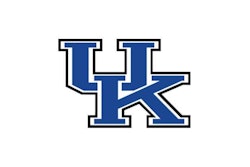Copyright 2017 The Atlanta Journal-Constitution
The Atlanta Journal-Constitution
Nearly two years before the U.S. Department of Justice completed its probe into the bizarre death of Kendrick Johnson, an FBI video analysis concluded the main targets of its investigation were nowhere near the Lowndes High School gymnasium in Valdosta where the 17-year-old victim was discovered in a rolled-up gym mat, according to a newly released documents.
"(Kendrick Johnson) and both persons of interest were in different areas of the LHS campus during the time in question," the FBI report, dated Sept. 9, 2014, states.
Yet the investigation continued, costing Brian Bell — accused by Johnson's parents of murdering their son — a football scholarship to Florida State University. Bell, along with his brother, parents, girlfriend and her parents, were also subjected to military-style law enforcement raids that turned up no evidence linking them to any crimes.
The release of the FBI analysis coincides with a decision by a federal judge late last week to dismiss a civil lawsuit filed last year by the Johnsons alleging a massive conspiracy involving FBI agent Rick Bell, Brian's father, Lowndes County' sheriff and school superintendent to "illegally cover up" Kendrick's murder by the Bell brothers along with at least one other accomplice.
The Johnsons are already facing a court order to pay the attorneys' fees of parties named in a wrongful death lawsuit they withdrew earlier in 2016. A final decision on just how much they'll have to fork over is expected by next month.
Meanwhile, the Bells have counter-sued the Johnsons and filed a separate suit against Ebony magazine for a series of articles implicating Brian and older brother Branden in Kendrick's death. The FBI analysis would only seem to bolster their claims.
"This is an egregious miscarriage of justice," said Savannah criminal defense attorney Tom Withers, a former federal prosecutor not affiliated with the legal actions surrounding Johnson's death. "It's shocking that this case would go forward after the FBI concluded these kids were not involved. It's just unbelievable."
It begs a question that continues to go unanswered. Why did Michael Moore, the former U.S. Attorney for the Middle District of Georgia, go forward with the case even when the evidence pointed to an accidental death, as state and local investigators originally concluded. Johnson died as the result of accidental "positional asphyxia," the state medical examiner's office had determined, suggesting the Lowndes sophomore had suffocated as a result of being trapped upside-down in the rolled-up mat. But Johnson's parents never believed the local authorities' explanation that the he got stuck in the mat after diving in to retrieve a shoe.
Moore has repeatedly declined comment except to say, in a 2016 interview with The Atlanta Journal-Constitution, that his goal was "to seek the truth."
Lawyers for The AJC have filed a motion moved to unseal the case file, including the affidavits that secured the search warrants conducted in 2015 by federal marshals, attired in combat gear.
"The public needs to know what happened here," said Jason Ferguson, one of the lawyers for the Bells.
Ferguson said he was told by the FBI that they stopped participating in the probe once the video analysis was completed. The FBI has declined comment, but the applications for the affidavits were signed by a Washington, D.C. police officer on loan to the Department of Justice.
The analysis, culled from surveillance cameras on the Lowndes High campus, included time stamps that adjusted discrepancies between multiple video systems used by the school. According to the report, those discrepancies were caused by the systems not being synchronized.
Brian Bell, the analysis determined, was en route towards the "D Wing" for class when Johnson was last seen entering the school's old gymnasium.
At the same time a second "person of interest," not named in the FBI report but believed to be Ryan Hall, a friend of Brian Bell mentioned in the Johnsons civil lawsuit, was seen in the school's parking lot heading towards another wing of the sprawling campus, according to the analysis.
Branden Bell, Brian's older brother who also received a target letter from Moore — which, the U.S. Attorneys Manual states, indicates "substantial evidence linking him or her to the commission of a crime" — had already been cleared by the FBI. Multiple witnesses confirmed that he was traveling with the wrestling team to Macon for a tournament at the same time Johnson was seen entering the old gym.
Withers said sanctions might be in line for Moore if in fact he continued the investigation without any probable cause.
Georgia Bar Rule 3:8 states that a prosecutor in a criminal case shall "refrain from prosecuting a charge that the prosecutor knows is not supported by probable cause."
"The hurdles are high" in proving that, Withers said, and the maximum punishment, according to the state bar handbook, is public reprimand.
TIMELINE IN KENDRICK JOHNSON CASE
Jan.11, 2013: The body of Kendrick Johnson, a 17-yearold Lowndes High sophomore, is found inside a rolled-up gym mat in the school's old gymnasium.
Oct. 21, 2013: Kendrick's parents, Kenneth and Jacquelyn Johnson, request a coroner's inquest they hope will force the Lowndes County Sheriff's Office to reopen the case.
Oct.31, 2013: Michael Moore, the U.S. attorney for the Middle District of Georgia, announces a formal review "of the facts and investigation surrounding the death of Kendrick Johnson."
Sept.9, 2014: FBI completes video analysis concluding "persons of interest" — including Brian Bell, targeted by prosecutors — were in "different areas"of the Lowndes High campus at the time Johnson was seen entering the school's old gym.
Jan. 12, 2015: Kenneth and Jacquelyn Johnson file a$100 million lawsuit alleging local and state law enforcement conspired with school officials to cover up the involvement of two classmates in their son's death.
March 6, 2015: The parents of the teenage brothers named in the Johnson's wrongful death lawsuit countersue, alleging libel and slander and seeking$1 million in damages.
July 21, 2015: Federal agents seize computers and cellphones belonging to the brothers and their parents.
Nov. 4, 2015: Judge denies Justice Department's request to delay evidence-gathering in the countersuit; U.S. attorney Moore announces his resignation.
June 20, 2016: Justice Department announces "there is insufficient evidence to prove beyond a reasonable doubt that someone or some group of people willfully violated Kendrick Johnson's civil rights or committed any other prosecutable federal crime."The decision came following more than 100 interviews the review of "tens of thousands"emails and text messages, along with surveillance videos from Lowndes High.
Read More of Today's AB Headlines
Subscribe to Our Daily E-Newsletter
Terms and Conditions Privacy Policy































